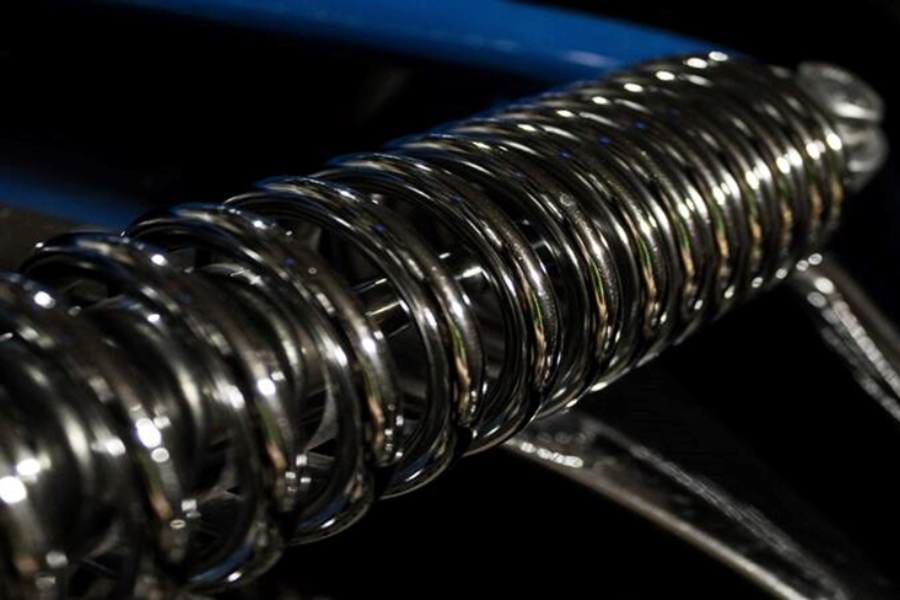What is the suspension system in a car? A suspension system is the initial defense a vehicle has against speed bumps and potholes. It ensures that the wheels stay in contact with the road while creating productive friction. Even though modern vehicles are designed with a sophisticated car suspension system, occasional problems may occur.
Knowing how to fix car suspension issues will save costly repairs and potential auto accidents. This article highlights the signs of car suspension problems and shows how to repair them in time.
Table of Contents
Signs to repair the auto suspension system
Car suspension repair tips
How much does car suspension repair cost?
Conclusion
Signs to repair the auto suspension system
Suspension troubles are a common issue faced by most car owners. Diagnosing what is wrong with the suspension system is a complex task.
A few quick signs to determine the problems in a car suspension system are:
Excessive bumpiness
The excessive bumpiness of the ride indicates a failed shock absorber. It fails to dampen the movement of the suspension, which causes the car to bounce.
The car sways from one side to another
Sometimes, the car may have a rocking movement after it goes over bumps. This happens when the linkages of rubber bushes in the auto suspension system wear off. A squeaking sound also accompanies the swaying movement.
The car collapses on one side
Knowing about the type of car suspension system is essential to understand why a car sags on one side. For instance, the leaf spring may lose its tension when the car has a leaf-spring suspension system. Asking for professional assistance is helpful in cases where a broken suspension system is causing this type of damage.
The front suspension rattles
A rattling sound or vibration from the front suspension is another indicator of a misaligned car suspension system. Worn-out ball joints are the likely reason behind this problem. These joints take a lot of stress from the suspension and may fail earlier than other parts.
One or more of these signs indicate problems in the car suspension system. Taking preventive measures and learning how to fix these issues is essential to ensure a smooth drive. These measures also prolong the life of a vehicle and will help to prevent further car suspension problems.
Car suspension repair tips
Change strut and shock absorbers
Although the auto air suspension systems have refined how people drive their cars, some still prefer traditional suspension systems. The latter is equipped with struts or shock absorbers to counter the motion of the spring. This helps the driver to keep the vehicle in control.
Worn-out shocks or struts feel loose, making it hard to control the vehicle. It also compromises the steering response and causes a scraping sound. Repairing these dampers could stop the car from pulling in a specific direction and can reduce friction.
It is essential to check car suspension components such as this for all kinds of wear and tear after covering 50 to 60 thousand miles. If the mechanic recommends the replacement of the struts or shock absorber, it is better to do it in pairs instead of replacing the damaged part. This optimizes the car’s performance and prolongs the suspension life.
Replace the spring

Shocks and struts are different types of car suspension systems. But a primary purpose served by both absorbers is to encounter the spring motion. The spring takes the initial force from the bump, and the dampers absorb this motion to control the vehicle. Further, the springs allow for an expanded range of movement.
Since coil springs are placed near the wheels and closer to the road, they are prone to corrosion and damage. And even though the springs are coated, the covering may break down, and the rust causes cracks or breakage.
Whether a car has an air suspension auto or a traditional suspension system, replacing a broken spring is the only method to repair it. This may seem like a straightforward task. However, most springs are compressed, and it can be dangerous to remove them without proper experience or suspension technology. Some experts even suggest installing new shocks along with the spring.
Replace ball joints
Ball joints eventually wear down due to the movement and friction they undergo. In some cases, the joint lubrication dries out, and the water penetrates the joints, causing them to rust. This can hamper the driver’s ability to control and steer the vehicle. The car suspension system may collapse, resulting in fatal accidents if the wheel suspension fails.
Replacing the older joints with new, high-quality ball joints will prolong the life of car suspension systems. Exchanging older joints with new ones is vital to avoid frequent visits to car repair shops.
Total system

If the car suspension problems are ignored, they make the car extremely unsafe to drive. Even the auto-rickshaw suspension system requires constant monitoring to ensure it functions well.
The car suspension system supports the entire vehicle and helps it to drive smoothly through all terrain. When this system wears out, it affects the drivers’ ability to control the vehicle, especially when they take corners or break. Anything from worn out shocks, a broken strut on the car, worn out springs, or ball joints could be the source of the suspension troubles.
In extreme cases, the mechanic may recommend replacing the entire air suspension auto system or a traditional suspension system. A high level of structural damage asks for a bigger investment but comes with enhanced security and durability.
How much does car suspension repair cost?
Several factors contribute to car suspension repair costs. For starters, the make and model will determine how much you will pay for the repair. High-end vehicles like Jaguar or BMW will require a higher suspension repair price than a Toyota or Honda. Note that some old cars may have rust underneath. It can be time-consuming for the specialists to access and remove the old parts. This will also result in a higher repair price.
Next, labor and component charges will also impact the final fee. For instance, some garages charge more because they use cutting-edge technologies and hire savvy professionals. On the flip side, a few mechanics charge lower prices because garage rents aren’t high or they have only recently entered the market.
Insurance is yet another factor that affects the repair charges of a car suspension system. Standard insurance plans don’t cover regular damage caused by daily wear and tear. Unless the suspension system was damaged in a severe incident, the car owner must pay repair costs from their pockets.
One should avoid the inevitable if there is trouble in the car suspension system. Insurance policies have drastic differences. Some cover all structure and labor costs, while others only guarantee the replacement charges. The repair cost will prevent further problems and hefty charges that may occur in the future. These repairs enhance the driver’s safety while keeping the car functioning efficiently.
Conclusion
Driving a car with a damaged suspension system is quite harmful. There are many options when considering the replacement of car suspension system parts like ball joints or springs. Awareness of the most in-demand and safest options will prevent all potential mishaps. Check out Chovm.com to learn more about the current market trends, and explore the key products available to supply to this market.





 বাংলা
বাংলা Nederlands
Nederlands English
English Français
Français Deutsch
Deutsch हिन्दी
हिन्दी Bahasa Indonesia
Bahasa Indonesia Italiano
Italiano 日本語
日本語 한국어
한국어 Bahasa Melayu
Bahasa Melayu മലയാളം
മലയാളം پښتو
پښتو فارسی
فارسی Polski
Polski Português
Português Русский
Русский Español
Español Kiswahili
Kiswahili ไทย
ไทย Türkçe
Türkçe اردو
اردو Tiếng Việt
Tiếng Việt isiXhosa
isiXhosa Zulu
Zulu